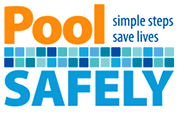.png)
 Worldwide, drowning is the leading cause of unintentional injury-related death, especially among children (1). In the United States alone, over the course of 2005 to 2009, an average of 3,533 non-boat- related fatal drownings occurred per year, approximately 20% of whom were children 14 years of age or younger. For every fatality, there are many more injuries requiring EMS and emergency intervention, necessitating a significant investment of resources and a high risk of injury with the potential for lifelong consequences, including severe brain damage. Many of these incidents are caused by a lack of awareness of proper safety measures, and the steps that can be taken after an accident to minimize the damage that occurs while help is on its way. The sections below provide information, trainings, and resources that are provided free to the public, and can help to reduce the toll taken by preventable accidents in your community.
Worldwide, drowning is the leading cause of unintentional injury-related death, especially among children (1). In the United States alone, over the course of 2005 to 2009, an average of 3,533 non-boat- related fatal drownings occurred per year, approximately 20% of whom were children 14 years of age or younger. For every fatality, there are many more injuries requiring EMS and emergency intervention, necessitating a significant investment of resources and a high risk of injury with the potential for lifelong consequences, including severe brain damage. Many of these incidents are caused by a lack of awareness of proper safety measures, and the steps that can be taken after an accident to minimize the damage that occurs while help is on its way. The sections below provide information, trainings, and resources that are provided free to the public, and can help to reduce the toll taken by preventable accidents in your community.
General Water Safety
The Centers for Disease Control and Prevention has put together a resource that includes safety tips around pools and beaches, as well as recommendations specific to children. When accidents do occur, members of the general public who understand basic emergency care can also save a life. Organizations such as the American Red Cross offer CPR classes nationwide, and many areas also offer free trainings that can be located by state (not all of these classes offer CPR certification along with the instruction). The University of Washington School of Medicine has compiled an excellent, comprehensive list of CPR instructions and resources, including an easy pocket guide and instructional videos. Remote learning is not a substitute for hands-on instruction and the intervention of professionals; however, even imperfect care, such as that provided by bystanders using the hands-only method, still makes a difference.
The Importance of Lifeguards
 Trained lifeguards have been shown to reduce the rates of injuries and drownings in pools and beach areas dramatically. A survey by the US Lifesaving Association (USLA) issued after a ten-year study found that more than three quarters of drownings occur at unsupervised beaches, and put the risk of drowning at a beach where lifeguards were present at less than one in 18 million. Estimates for the effectiveness of lifeguards indicate that between 70,000 and 100,000 people are saved annually, and that lifeguarded beaches have a ratio of approximately one drowning for every 4,832 rescues that take place. This does not include the impact of preventative measures taken by lifeguards in providing recommendations and direction in safe swimming for visitors, which are much higher (2). USLA offers an extensive public resource guide on lifeguards, certification, safety, and testimonials geared toward a general audience.
Trained lifeguards have been shown to reduce the rates of injuries and drownings in pools and beach areas dramatically. A survey by the US Lifesaving Association (USLA) issued after a ten-year study found that more than three quarters of drownings occur at unsupervised beaches, and put the risk of drowning at a beach where lifeguards were present at less than one in 18 million. Estimates for the effectiveness of lifeguards indicate that between 70,000 and 100,000 people are saved annually, and that lifeguarded beaches have a ratio of approximately one drowning for every 4,832 rescues that take place. This does not include the impact of preventative measures taken by lifeguards in providing recommendations and direction in safe swimming for visitors, which are much higher (2). USLA offers an extensive public resource guide on lifeguards, certification, safety, and testimonials geared toward a general audience.
Residential Pool Safety
Private swimming pools can provide a fun, safe escape from the hot weather, as long as they are properly secured and supervised; however, many families are unaware of the preventative measures that need to be taken to ensure that swimming pools do not become a potential hazard. A survey from 2005 to 2007 conducted by the US Consumer Product Safety Commission put the number of pool- and spa-related fatalities in children under 15 at an average of 385 per year, with the number of injuries requiring emergency care more than ten times higher. Children under five years of age made up 77% of both the injuries and fatalities, with the majority of the incidents occurring in a pool at a private residence (3). Pool accidents occur most frequently in summer months, and are widespread, with warm-weather states such as Florida, Arizona, California, and Georgia receiving the highest totals (4). These preventable deaths demonstrate the striking need for public education in pool safety, especially in situations where lifeguards are not present.
 Recognizing these risks, the Consumer Product Safety Commission issued a bilingual website, Poolsafely.gov, dedicated to presenting an easy-to-use guide to safe swimming. It emphasizes the many basic steps that can be taken to minimize the risk of drowning at both public and private facilities, along with portable, above-ground pools. This includes fencing, most significantly a barrier between the house and the pool, which has been shown to reduce mortality risk by 83% (5). Another key recommendation is teaching children to swim, starting from a young age; this reduces the likelihood of severe injury and may provide bystanders with a greater amount of time to reach a victim in the event of an emergency.
Recognizing these risks, the Consumer Product Safety Commission issued a bilingual website, Poolsafely.gov, dedicated to presenting an easy-to-use guide to safe swimming. It emphasizes the many basic steps that can be taken to minimize the risk of drowning at both public and private facilities, along with portable, above-ground pools. This includes fencing, most significantly a barrier between the house and the pool, which has been shown to reduce mortality risk by 83% (5). Another key recommendation is teaching children to swim, starting from a young age; this reduces the likelihood of severe injury and may provide bystanders with a greater amount of time to reach a victim in the event of an emergency.
Being Prepared – Safety During a Flood
Not all water-related accidents occur during recreation. Annually, between thirty and a hundred people are killed in flood-related deaths, the majority of which happen while the victim is walking or driving (6). Flooding also results in a massive amount of damage, averaged at more than $8 billion per year over the last thirty years. Several resources have been created to aid in both the safety and property risks created by flooding. The National Flood Insurance Program (NFIP) was created to ensure that homeowners, even those in high-risk areas, are able to protect the investment in their home in the event of a flood. The Red Cross information page includes tips on home preparation, evacuation and driving information, and recovery in the event of a large-scale flood. The National Oceanic and Atmospheric Administration (NOAA) also maintains a site dedicated to flood safety and awareness designed for a general audience.
1. Unintentional Drowning: CDC Research and Activities; Center for Disease Control, 2012. http://www.cdc.gov/HomeandRecreationalSafety/Water-Safety/drown-activiti...
2. Lifeguard Effectiveness: A Report of the Working Group. Atlanta: Centers for Disease Control and Prevention, National Center for Injury Prevention and Control; 2001.
3. Gipson, Kevin, Pool and Spa Submersion, Estimated Injuries and Reported Fatalities, 2010 Report; US Consumer Product Safety Commission, 2010; https://www.cpsc.gov/PageFiles/108926/poolsub2010.pdf
4. Stay Safe In and Around Swimming Pools, CDC, http://www.cdc.gov/Features/dsSafeSwimmingPool/
5. Girasek, Deborah, Evaluation of a brief intervention designed to increase CPR training among pregnant pool owners, Health Education Research, 2011
6. National Weather Service, 2012 US Flood Fatalities, Activities of Victims








